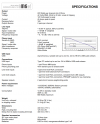Not sure exactly what you mean, but in practice, 100k of series resistance and 10k to deck is a perfectly sensible ~20dB attenuator, which is pretty unlikely to upset any source. The reason it's only approximately 20dB is because the 10k is in parallel with the amplifier's input impedance, and the 100k is in series with the source's output impedance. That's true of all resistive attenuators, which is why if accuracy if attenuation is needed, then the attenuator ratios need trimming.
For very many years (like 50+), sources have had a low output impedance and inputs have had a >10k input impedance, so there's never been an issue with impedance matching. Before then, with valve output stages that didn't have a cathode follower, output impedances were of the order of several 1000 ohms, even as high as 10kohms, so input impedances had to be very high(>1Mohm), fortunately not difficult with valves, but cable lengths between outputs and inputs had to be kept short, typically 1 - 1.5m (3-5ft). Pro equipment almost invariably had cathode follower outputs, and 600ohm outs and ins were normal, although even then, 600 ohm out to 10k in were not unusual.
S.

